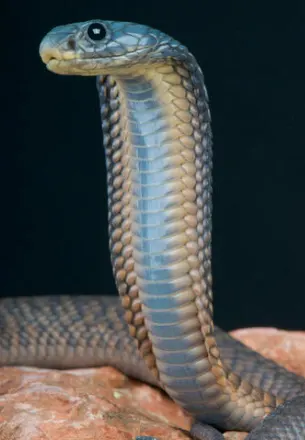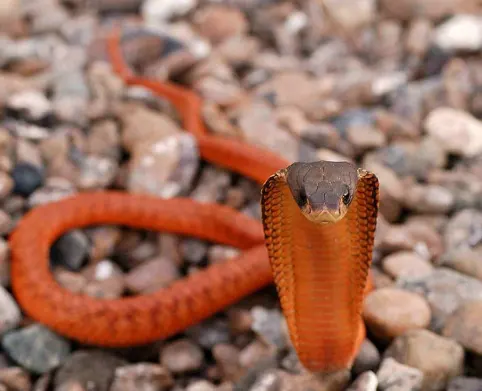Deep within the scorching sands of the Arabian Peninsula resides a creature as mysterious as it is dangerous—the Arabian cobra (Naja arabica). As the only true cobra species found in this region, the Arabian cobra is a fascinating reptile that demands respect and caution from those who encounter it. In this blog post, we delve into the intriguing world of the Arabian cobra, exploring its habitat, physical characteristics, behavior, and the role it plays in its ecosystem.
Table of Contents
Habitat and Distribution
The Arabian cobra inhabits the deserts, hills, and plains of the western and southern Arabian Peninsula. Countries such as Saudi Arabia, Yemen, and Oman are home to this elusive reptile. Despite living in one of the hottest ecosystems on the planet, the Arabian cobra often stays close to water sources and forages during the day, making it a rare sight for humans.
Physical Characteristics
The Arabian cobra’s striking appearance is characterized by its solid gold, yellow, or light brown scales. This coloration helps it blend seamlessly with its desert surroundings. It boasts a long, robust body that can grow up to 8 feet in length. The cobra’s iconic hood, formed by cervical ribs along its neck, and its triangular head with round, dark eyes add to its menacing yet majestic look.

Also read about: Exploring the Diversity of Black Snakes with Yellow Stripes
Fascinating Facts About the Arabian Cobra
- Photo Ark Milestone: The Arabian cobra earned the distinction of being the 12,000th species added to National Geographic’s photo ark project, which aims to photograph and protect many of the world’s animals.
- Reproductive Behavior: Little is known about the reproductive habits of the Arabian cobra, but it is believed that females lay around 40 eggs at a time, ensuring the continuation of their lineage.
- Sensory Adaptations: The Arabian cobra uses its tongue to flick out and gather odor molecules from the air. These molecules are then analyzed by a special organ on the roof of its mouth, helping the snake to sense its environment.
The Arabian Cobra’s Venom: A Potent Cocktail
The venom of the Arabian cobra is highly toxic and poses a significant threat to humans. Similar to its relative, the Egyptian cobra, its venom contains a potent mix of neurotoxins, which attack the nervous system, and cytotoxins, which damage cells. Symptoms of a bite include pain, swelling, headaches, nausea, dizziness, and in severe cases, paralysis and necrosis. Immediate medical attention and the administration of antivenom are crucial to prevent fatalities.
Interaction with Humans: A Cautious Approach
Despite its beauty, the Arabian cobra is not a creature to be trifled with. Known for its aggressive nature, it will stand its ground when threatened, rearing up, spreading its hood, and hissing loudly as a warning. Encounters with this snake should be avoided, and any bite should be treated as a medical emergency.

Find out other interesting articles here.
Conservation Status and Human Impact
Currently classified as a species of Least Concern by the IUCN Red List, the Arabian cobra does not face significant threats in the wild. However, it is subject to exploitation for venom extraction and the exotic pet trade. Conservation efforts are essential to ensure that this remarkable snake continues to thrive in its natural habitat.
To summarize, the Arabian cobra, with its notable presence and potent venom, is an interesting example of the diverse wildlife in the Arabian Peninsula. While it should be respected and approached with caution, it also plays an important role in its ecosystem by controlling rodent and bird populations. Understanding and appreciating the Arabian cobra highlights the need to preserve the delicate balance of nature in this extreme environment.
For those interested in reptiles and desert wildlife, the Arabian cobra represents the unique beauty of the Arabian Peninsula.
- Enchi Ball Python: A Unique and Stunning Morph of Python regius - March 27, 2025
- Emerald Tree Monitor: The Enigmatic Green Guardian of the Rainforest - March 26, 2025
- The Egyptian Cobra (Naja haje): A Fascinating Serpent - March 25, 2025
